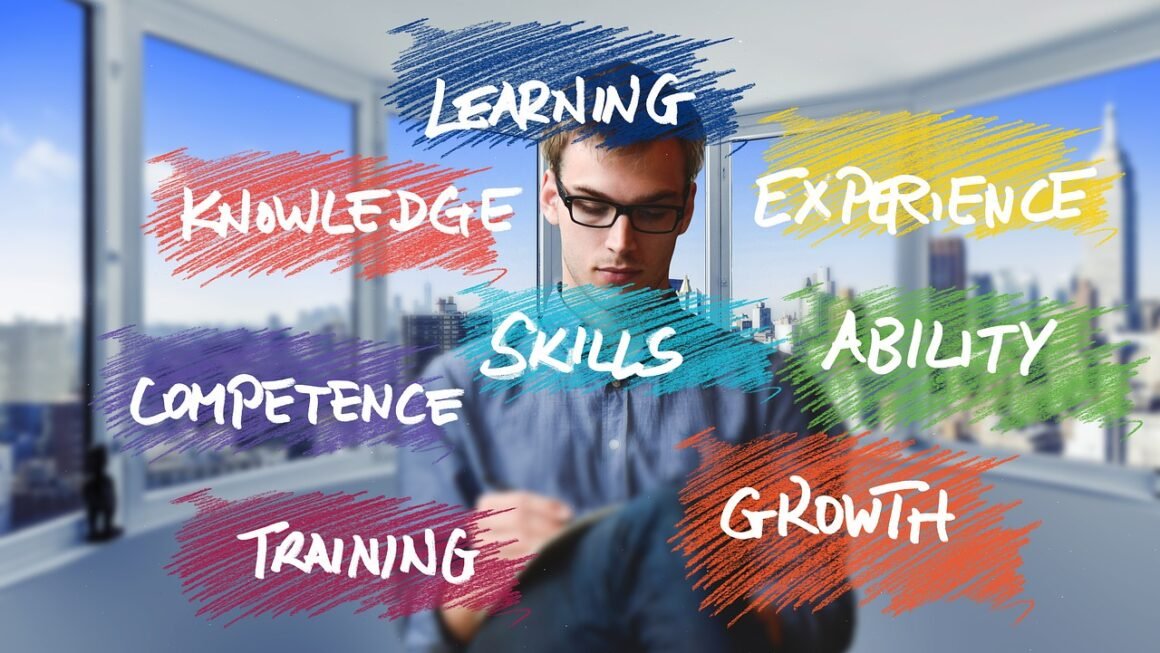Imagine a world where your to-do list doesn’t just sit there, passively waiting for you to chip away at it. Instead, it actively learns your work patterns, anticipates potential roadblocks, and intelligently prioritizes tasks to maximize your efficiency. That world is no longer a fantasy. AI-powered task tracking is revolutionizing how we manage our workloads, offering a level of automation and insight previously unimaginable. Let’s delve into the transformative power of artificial intelligence in the realm of task management.
The Rise of AI in Task Management
Understanding the Basics of AI in Task Tracking
AI-powered task tracking utilizes artificial intelligence algorithms, specifically machine learning, to automate, optimize, and enhance the process of managing tasks. This goes beyond traditional task management software by incorporating intelligent features such as:
- Smart Prioritization: AI analyzes task attributes like deadlines, dependencies, urgency, and importance, then dynamically adjusts priorities.
- Automated Task Assignment: AI can assign tasks to team members based on their skills, availability, and workload, ensuring optimal resource allocation.
- Progress Prediction: By analyzing historical data and current progress, AI can predict the likelihood of task completion within the estimated timeframe.
- Risk Identification: AI can identify potential risks or bottlenecks that could hinder task completion, allowing for proactive intervention.
Benefits of Integrating AI into Task Management
Implementing AI into your task tracking system yields numerous benefits, impacting both individual productivity and team performance.
- Increased Productivity: Automating repetitive tasks and providing intelligent suggestions frees up valuable time for more strategic and creative work.
- Improved Time Management: AI-powered prioritization and scheduling help individuals and teams allocate their time effectively, focusing on the most impactful tasks.
- Reduced Errors: Automation minimizes the risk of human error in data entry, task assignment, and progress tracking.
- Enhanced Collaboration: AI facilitates seamless communication and collaboration by providing a centralized platform for task management and progress updates.
- Data-Driven Insights: AI generates valuable insights into task performance, identifying areas for improvement and optimizing workflows.
- Better Resource Allocation: AI helps distribute tasks and resources equitably, preventing overwork and maximizing individual contributions.
Key Features of AI-Powered Task Tracking Tools
Intelligent Task Prioritization and Scheduling
AI-powered task prioritization goes beyond simple due dates. These systems analyze various factors to determine the optimal order in which to tackle tasks.
- Dependency Analysis: AI identifies tasks that are dependent on others and automatically adjusts their priorities based on the progress of those dependent tasks.
- Urgency Detection: AI can recognize urgent tasks based on predefined rules or patterns, ensuring they receive immediate attention. For example, a task related to a critical customer issue might be automatically prioritized.
- Importance Assessment: AI assesses the importance of tasks based on their impact on overall project goals and adjusts priorities accordingly.
- Dynamic Scheduling: AI can dynamically adjust task schedules based on real-time progress, resource availability, and unforeseen circumstances. If a team member calls in sick, the AI can reschedule tasks accordingly.
Automated Task Assignment and Resource Management
AI automates task assignment, reducing the burden on project managers and ensuring optimal resource utilization.
- Skill-Based Assignment: AI analyzes team members’ skills and assigns tasks to those with the appropriate expertise.
- Availability-Based Assignment: AI considers team members’ availability and workload when assigning tasks, preventing overwork and burnout.
- Workload Balancing: AI distributes tasks equitably among team members, ensuring a balanced workload and maximizing individual contributions.
- Automatic Reassignment: AI can automatically reassign tasks if a team member becomes unavailable or if a task requires specialized skills. For instance, if a designer leaves the project, AI can identify the next best available designer and reassign their tasks seamlessly.
Predictive Analytics and Risk Management
AI provides predictive analytics capabilities to forecast potential risks and improve task completion rates.
- Progress Prediction: AI analyzes historical data and current progress to predict the likelihood of task completion within the estimated timeframe.
- Bottleneck Identification: AI identifies potential bottlenecks or delays that could hinder task completion, allowing for proactive intervention.
- Risk Assessment: AI assesses the potential risks associated with each task and provides recommendations for mitigating those risks.
- Early Warning Systems: AI can trigger alerts or notifications when tasks are at risk of falling behind schedule, allowing for timely intervention.
Implementing AI Task Tracking in Your Workflow
Choosing the Right AI Task Tracking Tool
Selecting the appropriate tool requires careful consideration of your specific needs and requirements.
- Assess Your Needs: Identify your key pain points and areas for improvement in task management.
- Research Available Options: Explore different AI-powered task tracking tools and compare their features, pricing, and integrations.
- Consider Scalability: Choose a tool that can scale with your business as your needs evolve.
- Evaluate User-Friendliness: Opt for a tool with an intuitive interface that is easy to learn and use.
- Check for Integrations: Ensure the tool integrates seamlessly with your existing software and platforms.
- Read Reviews and Testimonials: Gain insights from other users’ experiences with the tool.
- Request a Demo or Free Trial: Test the tool firsthand to see if it meets your needs.
Integrating AI Task Tracking into Existing Systems
Seamless integration is crucial for maximizing the benefits of AI-powered task tracking.
- Data Migration: Migrate your existing task data to the new AI-powered platform.
- API Integrations: Connect the AI task tracking tool with your other software applications via APIs. For example, integrate it with your CRM, project management software, or communication tools.
- Customization: Customize the tool to fit your specific workflows and processes.
- Training and Onboarding: Provide adequate training and onboarding for your team to ensure they are comfortable using the new tool.
Best Practices for Maximizing AI Task Tracking Efficiency
Follow these best practices to optimize your AI task tracking system and achieve the best possible results.
- Define Clear Goals: Set clear goals and objectives for your task management system.
- Input Accurate Data: Ensure accurate and up-to-date data input to enable the AI algorithms to function effectively.
- Regularly Review and Adjust: Regularly review the performance of the AI task tracking system and make adjustments as needed.
- Provide Feedback to the AI: Provide feedback to the AI algorithms to help them learn and improve over time.
- Monitor Key Performance Indicators (KPIs): Track key performance indicators such as task completion rates, project timelines, and resource utilization.
- Encourage Team Adoption: Promote the use of the AI task tracking tool throughout your team and encourage them to embrace its benefits.
Real-World Examples of AI Task Tracking Success
Case Study 1: Increased Project Completion Rates
A software development company implemented an AI-powered task tracking tool and saw a 20% increase in project completion rates within the first quarter. The AI’s intelligent prioritization and automated task assignment helped streamline workflows and reduce delays.
Case Study 2: Improved Resource Allocation
A marketing agency utilized an AI task tracking system to optimize resource allocation across multiple projects. The AI’s ability to analyze team members’ skills and availability resulted in a 15% reduction in resource waste and a 10% increase in overall team productivity.
Case Study 3: Enhanced Risk Management
A construction company used AI task tracking to identify potential risks and delays in construction projects. The AI’s predictive analytics capabilities enabled project managers to take proactive measures to mitigate those risks, resulting in a 5% reduction in project costs and a 7% improvement in on-time delivery.
Conclusion
AI-powered task tracking represents a significant leap forward in how we manage work. By automating processes, providing intelligent insights, and predicting potential challenges, these tools empower individuals and teams to achieve greater productivity, improve time management, and optimize resource allocation. Embracing AI in task management is no longer a luxury but a necessity for organizations seeking to thrive in today’s competitive landscape. As AI technology continues to evolve, we can expect even more sophisticated and transformative applications in the future, further revolutionizing how we work and achieve our goals.




